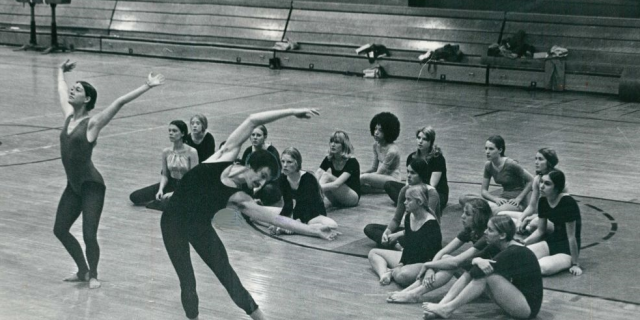The Gym No. 3: Proof

This is one of those letters that might seem intentionally knitted at the start but unravels.
A year or two ago, I participated in an academic conference on dance and philosophy. An aesthetician praised the bravery behind my contribution—I represented a “voice outside academia,” which was accurate, since I never studied dance in college, but a little ironic since my day job at the time was at a university—whereas a British dance critic and professor seemed shaken, or confused, by the incongruence that my writing on dance takes up probably about 50 percent of my headspace but makes up less than 5 percent of my income. I found the philosophers’ approach to dance luxurious, gamelike, and exasperating. In my presentation, my jubilant quoting of Peter Schjeldahl—”everything I know about art I’ve learned on a deadline”—seemed to register with the academics as dangerous, rather than as I read it, as spirited and pioneer. But I left saddened by the overall lack of bridges between academic writing and arts journalism. We have so much to learn from each other.
As a young person, I didn’t really know that dance criticism existed. (I never read Clive Barnes’s back page in Dance Magazine—this wall of text illustrated only by his black-and-white portrait seemed to me to be hopelessly boring and antithetical to anything I knew about dancing.) It wasn’t until I matriculated at Metro State College of Denver, as an English major, that I experienced the epiphanies of explication and joys of creating poetic responses to poetry. “Was it a good play/poem/story?” my favorite professor, a middle American with a self-made Brahmin accent, would ask. Then, “Was it a great play?” As these questions pitched all of us—a mixed group still straddling the threshold between the community college next door and the four-year institution—into a vast realm of evaluation and objectivity. Today, the weight of those questions hangs on my experiences of things, whether I’m writing or not. And yet: Last weekend, I saw three performances. I was frustrated, thrilled, moved, bored, surprised, tearful, grateful, skeptical, awed, and saddened. But the burden of proof proved too great for me last week—I couldn’t carve out or conjure the time or the headspace with which to write about any of those performances. All I could do was show up.
Prove that you’re a dancer: dance. Prove that you’re a writer: write. Prove that you’re an arts journalist: Respond to art in writing in a timely manner. Identify what’s newsworthy. Follow a story. Provide context. Describe an experience. Contribute to the record. I suppose the proof is also that when I’m not doing any of these, I feel it. I feel like the most important thing I can do, the thing I can contribute most of all, is being left for dead. I empathize with the hole in the record.
It took me years to transition as far as I have away from being a dancer, meaning in part to be able to accept that a profession need not—should not—be inextricable from oneself as a person or take up one’s entire being for the whole of one’s life.
I am grateful when, on occasion, the experience of dancing descends into my dreams, like a visitation. I never dream of writing.
Photo from the Denver Post archives, April 11, 1972
